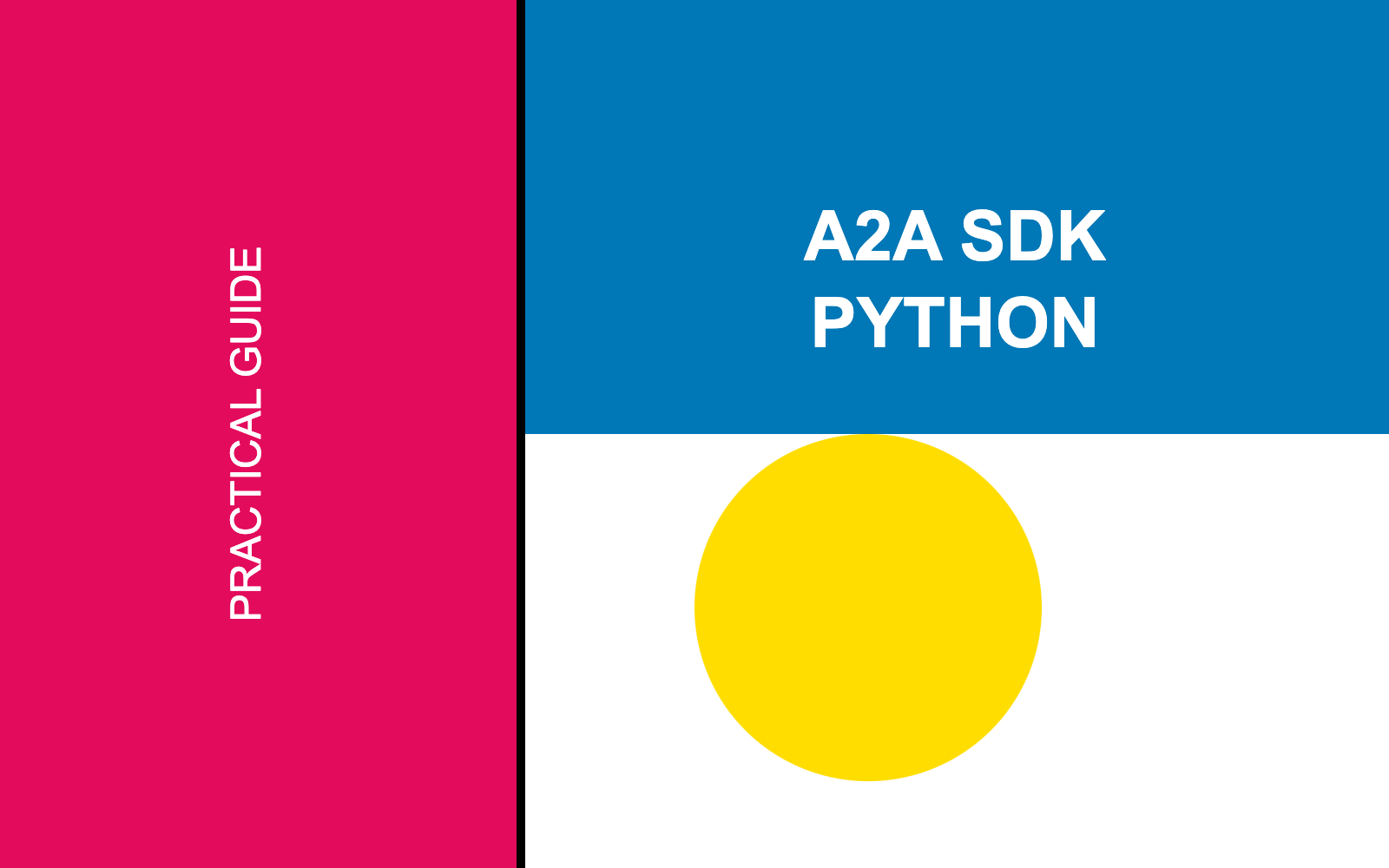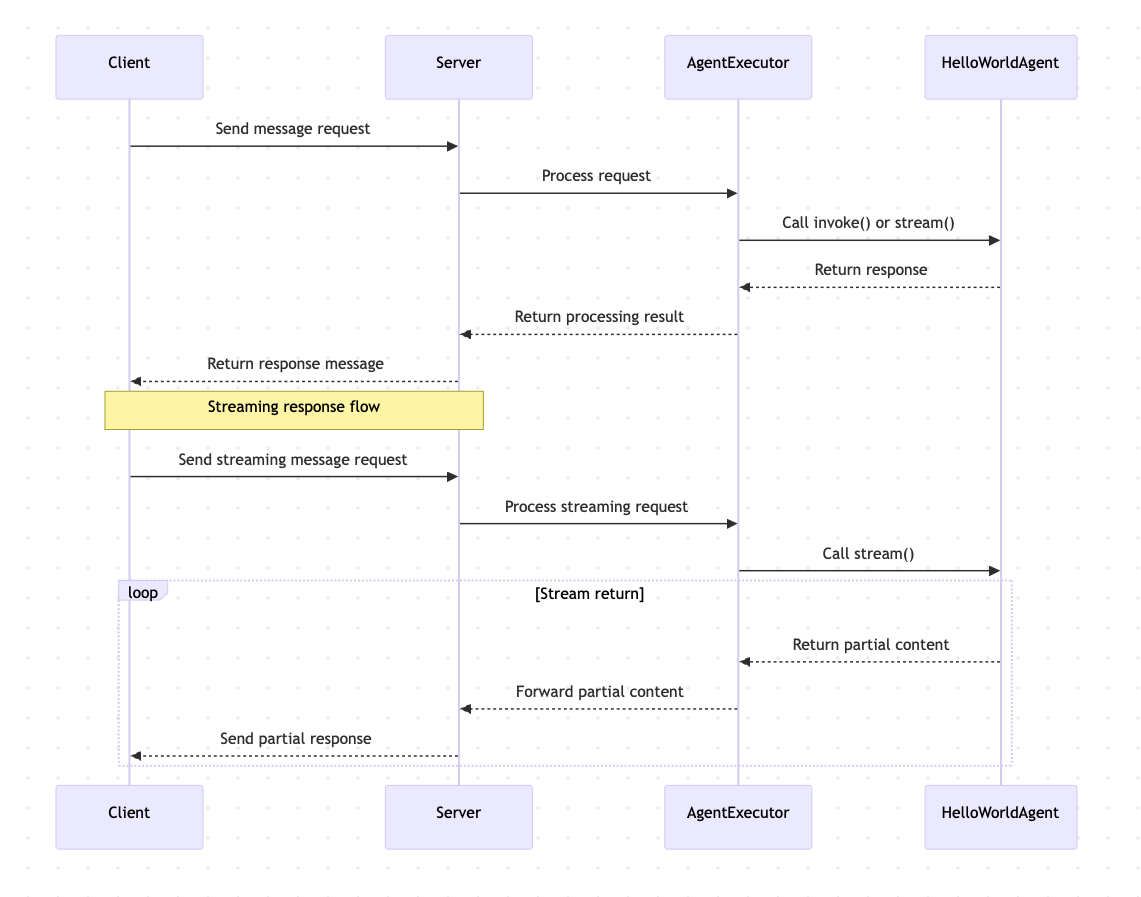
Table of Contents
Note
This is just a prototype that is rapidly evolving. This tutorial may become outdated at any time. You can find the latest updated article on the A2AProtocol blog.
My Environment
- Python 3.13
- uv: uv 0.7.2 (Homebrew 2025-04-30)
- Warp
- Ollama 0.6.7 (supports Qwen3)
- macOS Sequoia 15.4.1
A2A SDK Python
Clone the latest code:
git clone [email protected]:google/A2A.git
Create a virtual environment
cd A2A/a2a-python-sdk
# Create virtual environment
uv venv
# Activate
source .venv/bin/activate
Install A2A SDK
uv pip install -e .
Run A2A Server
cd a2a-python-sdk/examples/helloworld
uv run python __main__.py
Output:
⠙ Preparing packages... (16/18)
black ------------------------------ 481.31 KiB/1.39 MiB
ruff ------------------------------ 454.19 KiB/9.87 MiB Uninstalled 4 packages in 20ms
Installed 25 packages in 40ms
INFO: Started server process [46538]
INFO: Waiting for application startup.
INFO: Application startup complete.
INFO: Uvicorn running on http://0.0.0.0:9999 (Press CTRL+C to quit)
INFO: 127.0.0.1:49177 - "GET /.well-known/agent.json HTTP/1.1" 200 OK
INFO: 127.0.0.1:49179 - "POST / HTTP/1.1" 200 OK
INFO: 127.0.0.1:49181 - "POST / HTTP/1.1" 200 OK
Run A2A Client
In a new terminal window, activate the venv, navigate to the a2a-python-sdk/examples/helloworld directory, and then execute:
uv run python test_client.py
Output:
{'id': 'd220c3d7335e40478e1745d28d54155f', 'jsonrpc': '2.0', 'result': {'messageId': 'ac094ba7-f56c-41e3-85cf-a813406c65d4', 'parts': [{'text': 'Hello World', 'type': 'text'}], 'role': 'agent'}}
Received an instance of Message, getTask and cancelTask are not applicable for invocation
{'id': '403b8991269b42659d6349f34e8bf579', 'jsonrpc': '2.0', 'result': {'final': False, 'messageId': '0b56aa9d-25ca-4f2a-b397-7247c0081e94', 'parts': [{'text': 'Hello ', 'type': 'text'}], 'role': 'agent'}}
{'id': '403b8991269b42659d6349f34e8bf579', 'jsonrpc': '2.0', 'result': {'final': True, 'messageId': '16dce67d-e4e6-4943-bad9-933412ad94ed', 'parts': [{'text': 'World', 'type': 'text'}], 'role': 'agent'}}
Example completed.
Hello World Explanation
This is a simple A2A (Agent2Agent) SDK example that demonstrates how to create a basic Agent service. The example implements a simple Hello World Agent that can respond to messages and return "Hello World".
Project Structure
helloworld/
├── __main__.py # Main program entry, configuration and Agent service startup
├── agent_executor.py # Agent executor implementation
└── test_client.py # Test client example
Core Components
1. Agent Service Configuration (__main__.py)
- Defines the Agent's skill: a simple "hello_world" skill
- Creates an AgentCard, including the Agent's basic information and capabilities
- Configures and starts the A2A server, listening on
localhost:9999
2. Agent Executor (agent_executor.py)
HelloWorldAgentclass: implements basic message handling logicinvoke(): synchronously returns "Hello World"stream(): returns "Hello World" as a stream (in two parts)
HelloWorldAgentExecutorclass: handles various message requests- Supports regular message sending
- Supports streaming messages
- Handles task cancellation and resubscription requests
3. Test Client (test_client.py)
- Demonstrates how to connect to the Agent service
- Shows how to send messages
- Shows how to get task status
- Shows how to cancel tasks
- Shows how to use streaming messages
Workflow

Features
- Basic Message Handling: Able to receive and respond to simple text messages
- Streaming Response: Supports returning message content in chunks
- Task Management: Supports task status queries and cancellation operations
- Error Handling: Includes basic error handling mechanisms